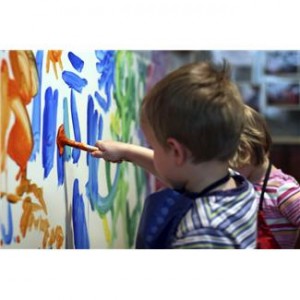Parents and caregivers often ask what young children need to know before kindergarten; this is the 15th in a series of blog posts on kindergarten readiness and early learning basics. No matter the age of your little one, this will give you a general picture of what to do as your child’s very first teacher.
One of the items often on kindergarten readiness assessments is a check to see if children can follow directions. This can be a challenge for some children and the fault is not because they didn’t hear or listen to the instructions. Instead, the problem may be lack of experience. Just like other thinking skills, children need opportunities to practice following instructions.
 For young children, instructions should be short and simple, starting with just one part at a time, such as put your book on the shelf. Then, instructions can have 2 parts, for example: get a spoon from the drawer and put it on the table.
For young children, instructions should be short and simple, starting with just one part at a time, such as put your book on the shelf. Then, instructions can have 2 parts, for example: get a spoon from the drawer and put it on the table.
Shorter directions are easier to remember than longer ones. A friend shared the story with me about a young boy at kindergarten whose mother had given him some instructions. She told him when he went to the paint center to take off his sweater and not to get paint on his clothes. He remembered the first part and last but not the middle: take off his…clothes. She turned around from helping another child and there he was at the paint center, quite naked. Together with the teacher, he practiced how to use a paint shirt instead.
Simon Says is a fun game for following directions. At home, try giving instructions in a robot voice, or singing them. A bit of fun helps get children’s attention so they hear and listen better. Cooking and crafts are super opportunities to practice instructions. What other activities do you use for helping your children develop the skill of following directions?
